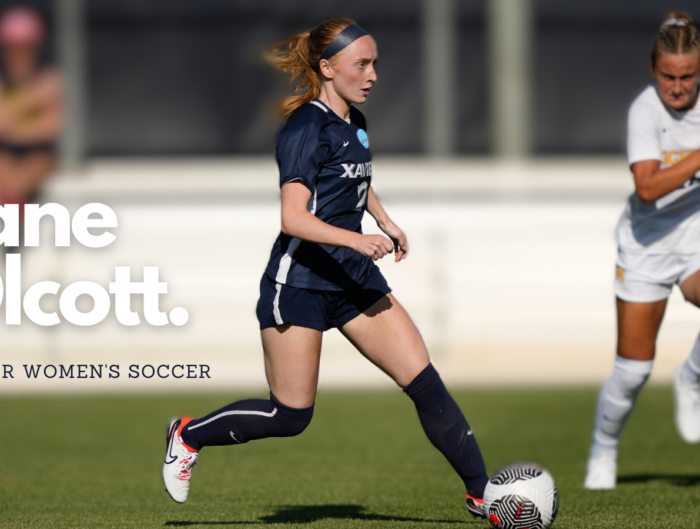In today’s digital era, technology has made its way into nearly every aspect of our lives, and youth sports coaching is no exception. The integration of technology in coaching has been swift and transformative, offering coaches and athletes a wide array of tools and resources to enhance training, performance analysis, and communication. The future of coaching lies in finding the delicate balance between leveraging technology’s advantages and preserving the human touch that makes coaching an invaluable experience. In this blog, we will explore the role of technology in youth sports, the concerns associated with its incorporation, and how coaches can strike the right balance.
The Sports Technology Boom
Technology has revolutionized the world of coaching, providing coaches and parents with an array of tools to improve training and competition experiences. From video analysis tools to wearable devices, mobile apps to virtual reality technologies, these tools have become increasingly prevalent in youth sports. Coaches can utilize video analysis tools to provide detailed feedback, track performance metrics, and even facilitate remote training sessions. Parents, too, are recognizing the potential of technology to enhance their child’s sports experience. A survey conducted by the Aspen Institute’s Project Play found that 75% of parents of youth athletes believe technology can positively contribute to their child’s sports experience.
Primary Concerns of Incorporating Technology
While the benefits of sports technology are clear, there are valid concerns associated with its incorporation into coaching practices. One concern is the potential over-reliance on technology at the expense of traditional coaching methods, removing the human element from the equation.
Coaches may also face challenges in terms of time and efficiency, as integrating technology seamlessly into training sessions and competitions can require additional time, effort, and resources.
Understanding and utilizing technological analysis effectively can be overwhelming for coaches who are unfamiliar with the intricacies of technology. Additionally, implementing sports technology may present technical challenges for coaches with limited experience in this domain.
Finding the Balance: Striking the Sweet Spot
Despite the concerns, it is crucial to recognize that technology has become an integral part of coaching, from professional to youth sports. The key to finding the balance lies in carefully selecting technology tools that align with coaching objectives and the specific needs of the team. By leveraging technology effectively and considering the unique qualities of each athlete, coaches can create an environment that maximizes the benefits of technology while fostering athlete growth and success.
The Science of Technology and the Art of Coaching

Shift from Subjective Feedback to Data-Driven Discussions:
Sports technologies provide coaches with objective data and insights about players’ performance, physiological responses, and tactical analysis.
For example, Beyond Pulse technology collects data on heart rate, exertion levels, and recovery patterns, while Veo technology captures and analyzes video footage. This objective feedback enables coaches to assess performance, track progress, and identify areas for improvement. It helps overcome the limitations of our memory, as studies have shown that coaches can only recall about 40% of key moments in the game accurately. Technology ensures that crucial information is not overlooked.

Personalized Attention and Feedback:
Armed with objective data and insights, coaches can provide personalized attention and feedback to each player. By tailoring their coaching approach based on objective feedback, coaches demonstrate their commitment to the individual development of their players.
This personalized attention strengthens the coach-player relationship as players feel valued and supported in their unique journeys.

Open Communication Channels:
Sports technologies facilitate transparent communication between coaches and players. Coaches can share objective data, video analysis, and insights with players, fostering open and honest discussions about performance, progress, and goals. This transparent communication builds trust and establishes a supportive environment where players feel comfortable seeking guidance and discussing their aspirations.

Collaboration and Shared Learning:
Sports technologies promote collaboration and shared learning between coaches and players. Coaches can involve players in the analysis and interpretation of objective data and video footage, encouraging their active participation in the learning process. This collaborative approach empowers players and strengthens the coach-player relationship.

Celebrating Progress and Success:
Sports technologies enable coaches to celebrate the progress and successes of their players. By tracking objective data and capturing memorable moments through video footage, coaches can acknowledge and celebrate the growth and achievements of their players. This recognition strengthens the coach-player relationship and motivates players to continue their development journey.

Coaching Expertise:
Sports technologies enable coaches to develop data literacy skills, which involves understanding and interpreting the objective data provided by these tools. By becoming proficient in data analysis and interpretation, coaches can enhance their coaching expertise. They can identify patterns, trends, and correlations in the data, allowing them to make informed decisions and develop effective strategies. Data literacy empowers coaches to unlock valuable insights from the technology and apply them to optimize player performance, training methodologies, and game strategies – elevating the overall quality and effectiveness of coaching practices.
Tune into the Full Webinar

Download our full webinar – The Future of Coaching: Finding the Balance between Tech and Human Side in Youth Sports – to explore real case studies, strategies, and success stories from coaches who have successfully integrated technology while keeping a humanistic coaching approach at the forefront.
Don’t miss out on this opportunity to explore finding the balance between the objective and the subjective.

 FRA
FRA
































